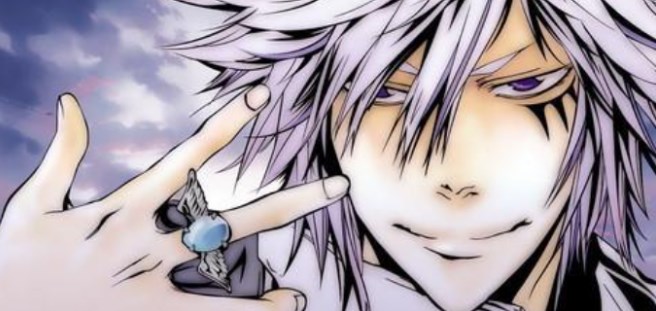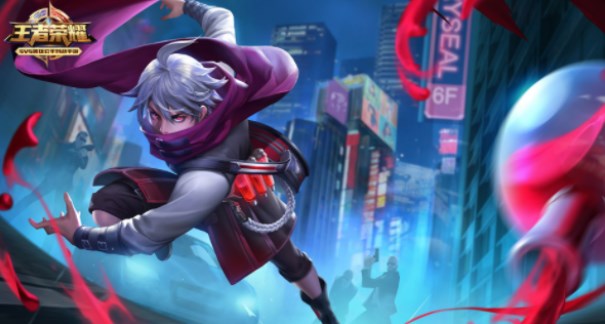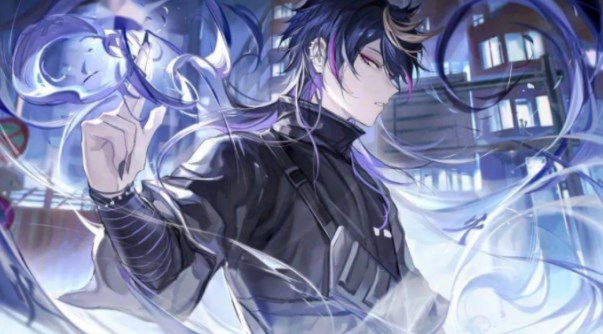本文目录
中国卡通电影的历史英文
The Origins of Cartoons
What may be seen as possibly the earliest political cartoon is an anonymous woodcut entitled Le Revers du Jeu des Suysses (The Other Side of the Swiss Game), produced in 1499. In this, the pope, the Holy Roman Emperor, and the kings of France and England can be seen playing cards while, under the table, a Swiss soldier stacks the decks in a satirical commentary on French ambitions in Italy (the support of elite Swiss soldiers was essential to France). At about the same time, Pope Alexander VI was depicted as a devil and in another drawing a Jesuit priest is given a wolf’s head. Perhaps the most memorable caricature of this period—and one exactly datable and attributable to a known artist—was an anti-Protestant woodcut by Erhard Schoen of 1521, showing the Devil playing a pair of bagpipes, the bellows of which are depicted as the head of Martin Luther.
A number of other artists of this period also produced heavily allegorical and often fantastical drawings which have resonances in the modern cartoon. However, it was in Italy at the hands of the Carracci family and others such as Pier Leone Ghezzi—the first artist to earn a living solely by this kind of work—that the modern cartoon can be said to have been moulded. It was also in Italy that these early caricaturas flourished, and almost uniquely so until collections of such drawings (especially those of Ghezzi) found their way across Europe, and Hogarth began his sequence of “modern moral subjects” in England in the 1730s.
III.The 18th Century
Lord Byron is reputed to have said: “Ridicule is the only weapon the English climate cannot rust.” In the field of cartoons and caricature it could be argued with some justification that the English—or more properly the British—have often wielded the sharpest weapons of all.
The first British artist to excel in this area—for many the true founder of the modern cartoon in all its aspects, whether socio-political satire, caricature, or simple graphic humour—was William Hogarth. He was also the first artist to mass-produce his own work, in the form of engravings, for sale to the public. His satires on the follies and vices of his age—beginning with A Harlot’s Progress and The Rake’s Progress—were a great success and set the tone for all future work. However, Hogarth’s successors differed from him in two respects—they had their work reproduced by etching rather than engraving and they were more concerned with political propaganda and pictorial jokes than moral themes.
The London-based printer and publisher Arthur Pond produced a collection of European caricatures (including many by Ghezzi) in 1744 but, according to Horace Walpole, the first Briton to make satirical drawings of specific political figures was the amateur artist George, Marquis Townshend. However, Hogarth’s two most important successors in the 18th century were Thomas Rowlandson and James Gillray.
IV.The Early 19th Century
Rowlandson was primarily a social satirist and made numerous prints that commented on the manners and fashions of the day, or that depicted bawdy scenes. However, he is probably best known for his creation of what is perhaps the first cartoon character, Dr Syntax, in The Three Tours of Dr Syntax (1809, 1820, and 1821).
Though Rowlandson did in fact produce many fine political drawings (especially of Napoleon), it was James Gillray, with the support of the leading West End print-seller Mrs Hannah Humphrey (above whose shop he lived), who dominated the political field in this period. His attacks on Pitt, George III and George IV, the French Revolution, and Napoleon bore a savagery and passion that have only recently begun to reappear in the political cartoon.
The last of the really important British graphic satirists of the Georgian period (before France began to dominate the scene) was George Cruikshank. Working at first with his brother Robert in the Scourge, his illustrations to William Hone’s pamphlets attacking George IV forced the king to try to bribe him to tone down his work. He also produced a series called Monstrosities (1816-1829), mocking fashions, and was so popular that Sketches by Boz, which he illustrated, sold at first largely on the artist’s name rather than that of the then little-known writer Charles Dickens. However, in about 1847 he joined the Total Abstinence movement and his work lost its edge completely.
Other notable British artists of this period include William Heath (Paul Pry), who edited and illustrated the Northern Looking-Glass (1825-1826), the first caricature magazine in Europe; John Doyle (HB), the grandfather of Sir Arthur Conan Doyle; and the gifted Robert Seymour, who was the main illustrator of Figaro in London (a precursor of Punch) and who produced seven plates for Dickens’s Pickwick Papers before his untimely death by suicide.
The technique of lithography, invented in 1798, gave artists the opportunity of drawing directly on to the printing surface and allowed a much wider range of textures and colours than was possible with etching or engraving (see Prints and Printmaking). Caricaturists were not slow to exploit the new medium. Foremost among them was the Frenchman Honoré Daumier, whose work dominated this period and who exerted enormous influence worldwide.
The early 19th century was also the era of the mass development of the press. Hitherto, humorous or satirical drawings had only appeared as individual works of art or as limited-edition prints—often hand-coloured—available only in specialist shops in large cities such as London. In the 19th century, however, with the advent of lithography and woodblock engraving, cartoons and caricatures began to appear in newspapers and magazines, which were widely disseminated and sometimes also used colour printing techniques.
In France the cartoonist Charles Philipon, generally acknowledged as the father of the modern humorous magazine, founded La Caricature in 1830. In its pages, he and Daumier, among others, mercilessly lampooned Louis-Philippe. On one occasion, Daumier drew him as Gargantua (the giant whose legendary exploits were popularized by Rabelais) sitting on a commode and Philipon himself once depicted him as a pear—the subsequent furore led to both artists being imprisoned. Then in 1832 Philipon began the less political but even more successful magazine LeCharivari, with contributions by Daumier, Paul Gavarni (under the pseudonym Guillaume-Sulpice Chevalier), Jean-Ignace-Isodire Grandville (under the pseudonym Gérard), and others. When in 1835 French censorship laws prevented direct attacks on individuals, the satirists took to using type-figures, Daumier’s characters Ratapoil and Robert Macaire being particularly noteworthy.
Meanwhile, in Britain, the Northern Looking-Glass (which had been republished as a monthly sheet of caricatures by Thomas Maclean in 1830) paved the way for Gilbert à Beckett’s Figaro in London (1831), with its maxim that “Satire should, like polish’d razor keen / Wound with a touch that’s scarcely felt or seen”, and ultimately led to Henry Mayhew’s hugely successful magazine Punch: or the London Charivari (1841), modelled at first on Philipon’s journal (as reflected in its subtitle).
It was in a feature in this latter weekly magazine, two years after its foundation, that the word “cartoon”, in its modern sense of a humorous or satirical drawing, was first used. A competition had been announced for designs for frescos to decorate the walls of the new Houses of Parliament in Westminster (the old building had burnt down). When all the entries—which took the form of traditional cartoons, or templates of the kind used for fresco painting, tapestries, mosaics, and so forth—had arrived, an exhibition was held in 1843. Punch lampooned the show and at the same time drew attention to the plight of the city’s underprivileged masses in a series of six poignant drawings by its main artist, John Leech. The first of these, appropriately superscribed “Cartoon No. 1”, depicted a crowd of dishevelled people looking at the exhibition, with the caption “Shadow and Substance”. After the series ended, the word “cartoon” continued to be used for the magazine’s main weekly full-page topical drawing. Later, however, it became more widely used to describe humorous or satirical drawings in general and that sense has remained to this day.
V.The Late 19th Century
The second half of the 19th century saw a flowering of first-class talent in cartoons and caricatures. In France—appearing in Le Rire (1894), Le Journal Amusant, and other publications—were Henri de Toulouse-Lautrec, Gaspard-Félix Tournachoy (under the pseudonym Nadar), André Gill (under the pseudonym Louis Gosset de Guines), Gustave Doré, and the Russian-born master of the caption-less drawing, Caran D’Ache (Emmanuel Poiré). Owing something in style to the German painter and poet Wilhelm Busch and others, the work of Caran D’Ache had considerable impact on the more open, less cross-hatched style of drawing that would come to characterize 20th-century cartoons, comic strips, and animation. A typical example of his histoires sans paroles (stories without words) is “The Cow and the Train”. This comprises seven almost identical full-face images of a cow standing in a field, seen, as it were, from the viewpoint of an invisible passenger in a train. Over the seven frames the cow’s eyes move from left to right as the train passes by and in the eighth frame it lowers its head and resumes grazing.
Elsewhere on the Continent, Virginio headed Il Fischietto in Italy and in Germany—working for such new magazines as Fliegende Blätter (1845), Kladderadatsch (1848), and Simplicissimus (1896)—were such accomplished artists as Eduard Thöny, Thomas Theodor Heine, Olaf Gulbransson, George Grosz, Karl Arnold, and Busch.
Britain, meanwhile, could boast, among others, John Leech, cover-designer of Punch, Richard Doyle, Linley Sambourne, and John Tenniel. Tenniel is perhaps best known for his illustrations to Alice’s Adventures in Wonderland and Through the Looking-Glass by Lewis Carroll, but he also drew over 2,000 cartoons for Punch, including the famous and much-parodied caption-less cartoon “Dropping the Pilot” that satirizes the sacking by Kaiser Wilhelm of his greatly respected chancellor Bismarck, who is depicted as a harbour pilot leaving the ship of state captained by Wilhelm. Another memorable cartoon of this period (and one that has given a phrase to the English language) is “The Curate’s Egg” by George Du Maurier. Here a curate dines with his bishop, who comments: “I’m afraid you’ve got a bad Egg, Mr Jones.” The curate meekly replies: “Oh no, my Lord, I assure you! Parts of it are excellent!”.
Many new magazines also appeared in Britain at this time, among them Strand Magazine, Fun, Judy, Pick-Me-Up (edited by the cartoonist Leonard Raven-Hill), Tomahawk, and Lika Joko. This latter was founded by Harry Furniss, who created the famous Pear’s Soap cartoon advertisement in which a bedraggled tramp seated at a desk is writing a testimonial for the product: “I used your soap two years ago; since then I have used no other”. Vanity Fair (1868) quickly became renowned for its full-page, full-colour chromolithographic caricatures of celebrities by Ape (Carlo Pellegrini), Spy (Leslie Ward), Max Beerbohm, and others. In 1888 Francis Carruthers Gould joined the staff of the Pall Mall Gazette as the world’s first daily newspaper cartoonist.
In the United States as well there were now important artists and magazines. The forerunner of them all, and perhaps the first truly American political cartoon, was “Join or Die” (Pennsylvania Gazette, 1754) by Benjamin Franklin. In this a snake is shown cut into eight sections, each one marked with the initials of one of the eight American colonies that Franklin felt should unite in their struggle against attacks by French settlers and Native Americans and later against British rule itself (see American War of Independence). The year 1812 saw the publication in the Boston Weekly Messenger of “The Gerry-Mander” by Elkanah Tisdale—a cartoon salamander made by combining map outlines of rigged voting districts in Massachusetts and attacking the Republican governor Gerry Elbridge.
A number of political cartoons later appeared in earnest during the administrations (1828-1836) of President Andrew Jackson. However, it was with Harper’s Weekly (1857) and later with the American Vanity Fair (1859) that political cartooning really began to take root in the United States. The foremost exponent at this time—who was also the inventor of the symbol of the Democrats (a donkey) and of the Republicans (an elephant)—was the German-born Thomas Nast. Nast is perhaps best known for bringing to book the corrupt New York politician William Tweed, a leader of the Tammany Society, by featuring him and his cronies in biting caricature-filled cartoons such as “A Group of Vultures Waiting for the Storm to ‘Blow Over’—’Let Us Prey’” and “The Tammany Tiger Let Loose—What Are You Going to Do About It?”. The Austrian-born Joseph Keppler, another major figure in this period, founded the leading humour magazine Puck (1876). However, the United States’ first native-born cartoonist was James Albert Wales, who founded Judge in 1881.
其实还有很多。。。 请参考下面的网站。。。
AI有啥用
AI有啥用ai可以代替人去危险的地方工作
人工智能是计算机科学的一个分支,致力与生产出一种类人的机器智慧。
高分题非常的卡通的历史要是英语写的
The Origins of Cartoons
What may be seen as possibly the earliest political cartoon is an anonymous woodcut entitled Le Revers du Jeu des Suysses (The Other Side of the Swiss Game), produced in 1499. In this, the pope, the Holy Roman Emperor, and the kings of France and England can be seen playing cards while, under the table, a Swiss soldier stacks the decks in a satirical commentary on French ambitions in Italy (the support of elite Swiss soldiers was essential to France). At about the same time, Pope Alexander VI was depicted as a devil and in another drawing a Jesuit priest is given a wolf’s head. Perhaps the most memorable caricature of this period—and one exactly datable and attributable to a known artist—was an anti-Protestant woodcut by Erhard Schoen of 1521, showing the Devil playing a pair of bagpipes, the bellows of which are depicted as the head of Martin Luther.
A number of other artists of this period also produced heavily allegorical and often fantastical drawings which have resonances in the modern cartoon. However, it was in Italy at the hands of the Carracci family and others such as Pier Leone Ghezzi—the first artist to earn a living solely by this kind of work—that the modern cartoon can be said to have been moulded. It was also in Italy that these early caricaturas flourished, and almost uniquely so until collections of such drawings (especially those of Ghezzi) found their way across Europe, and Hogarth began his sequence of “modern moral subjects” in England in the 1730s.
III.The 18th Century
Lord Byron is reputed to have said: “Ridicule is the only weapon the English climate cannot rust.” In the field of cartoons and caricature it could be argued with some justification that the English—or more properly the British—have often wielded the sharpest weapons of all.
The first British artist to excel in this area—for many the true founder of the modern cartoon in all its aspects, whether socio-political satire, caricature, or simple graphic humour—was William Hogarth. He was also the first artist to mass-produce his own work, in the form of engravings, for sale to the public. His satires on the follies and vices of his age—beginning with A Harlot’s Progress and The Rake’s Progress—were a great success and set the tone for all future work. However, Hogarth’s successors differed from him in two respects—they had their work reproduced by etching rather than engraving and they were more concerned with political propaganda and pictorial jokes than moral themes.
The London-based printer and publisher Arthur Pond produced a collection of European caricatures (including many by Ghezzi) in 1744 but, according to Horace Walpole, the first Briton to make satirical drawings of specific political figures was the amateur artist George, Marquis Townshend. However, Hogarth’s two most important successors in the 18th century were Thomas Rowlandson and James Gillray.
IV.The Early 19th Century
Rowlandson was primarily a social satirist and made numerous prints that commented on the manners and fashions of the day, or that depicted bawdy scenes. However, he is probably best known for his creation of what is perhaps the first cartoon character, Dr Syntax, in The Three Tours of Dr Syntax (1809, 1820, and 1821).
Though Rowlandson did in fact produce many fine political drawings (especially of Napoleon), it was James Gillray, with the support of the leading West End print-seller Mrs Hannah Humphrey (above whose shop he lived), who dominated the political field in this period. His attacks on Pitt, George III and George IV, the French Revolution, and Napoleon bore a savagery and passion that have only recently begun to reappear in the political cartoon.
The last of the really important British graphic satirists of the Georgian period (before France began to dominate the scene) was George Cruikshank. Working at first with his brother Robert in the Scourge, his illustrations to William Hone’s pamphlets attacking George IV forced the king to try to bribe him to tone down his work. He also produced a series called Monstrosities (1816-1829), mocking fashions, and was so popular that Sketches by Boz, which he illustrated, sold at first largely on the artist’s name rather than that of the then little-known writer Charles Dickens. However, in about 1847 he joined the Total Abstinence movement and his work lost its edge completely.
Other notable British artists of this period include William Heath (Paul Pry), who edited and illustrated the Northern Looking-Glass (1825-1826), the first caricature magazine in Europe; John Doyle (HB), the grandfather of Sir Arthur Conan Doyle; and the gifted Robert Seymour, who was the main illustrator of Figaro in London (a precursor of Punch) and who produced seven plates for Dickens’s Pickwick Papers before his untimely death by suicide.
The technique of lithography, invented in 1798, gave artists the opportunity of drawing directly on to the printing surface and allowed a much wider range of textures and colours than was possible with etching or engraving (see Prints and Printmaking). Caricaturists were not slow to exploit the new medium. Foremost among them was the Frenchman Honoré Daumier, whose work dominated this period and who exerted enormous influence worldwide.
The early 19th century was also the era of the mass development of the press. Hitherto, humorous or satirical drawings had only appeared as individual works of art or as limited-edition prints—often hand-coloured—available only in specialist shops in large cities such as London. In the 19th century, however, with the advent of lithography and woodblock engraving, cartoons and caricatures began to appear in newspapers and magazines, which were widely disseminated and sometimes also used colour printing techniques.
In France the cartoonist Charles Philipon, generally acknowledged as the father of the modern humorous magazine, founded La Caricature in 1830. In its pages, he and Daumier, among others, mercilessly lampooned Louis-Philippe. On one occasion, Daumier drew him as Gargantua (the giant whose legendary exploits were popularized by Rabelais) sitting on a commode and Philipon himself once depicted him as a pear—the subsequent furore led to both artists being imprisoned. Then in 1832 Philipon began the less political but even more successful magazine LeCharivari, with contributions by Daumier, Paul Gavarni (under the pseudonym Guillaume-Sulpice Chevalier), Jean-Ignace-Isodire Grandville (under the pseudonym Gérard), and others. When in 1835 French censorship laws prevented direct attacks on individuals, the satirists took to using type-figures, Daumier’s characters Ratapoil and Robert Macaire being particularly noteworthy.
Meanwhile, in Britain, the Northern Looking-Glass (which had been republished as a monthly sheet of caricatures by Thomas Maclean in 1830) paved the way for Gilbert à Beckett’s Figaro in London (1831), with its maxim that “Satire should, like polish’d razor keen / Wound with a touch that’s scarcely felt or seen”, and ultimately led to Henry Mayhew’s hugely successful magazine Punch: or the London Charivari (1841), modelled at first on Philipon’s journal (as reflected in its subtitle).
It was in a feature in this latter weekly magazine, two years after its foundation, that the word “cartoon”, in its modern sense of a humorous or satirical drawing, was first used. A competition had been announced for designs for frescos to decorate the walls of the new Houses of Parliament in Westminster (the old building had burnt down). When all the entries—which took the form of traditional cartoons, or templates of the kind used for fresco painting, tapestries, mosaics, and so forth—had arrived, an exhibition was held in 1843. Punch lampooned the show and at the same time drew attention to the plight of the city’s underprivileged masses in a series of six poignant drawings by its main artist, John Leech. The first of these, appropriately superscribed “Cartoon No. 1”, depicted a crowd of dishevelled people looking at the exhibition, with the caption “Shadow and Substance”. After the series ended, the word “cartoon” continued to be used for the magazine’s main weekly full-page topical drawing. Later, however, it became more widely used to describe humorous or satirical drawings in general and that sense has remained to this day.
V.The Late 19th Century
The second half of the 19th century saw a flowering of first-class talent in cartoons and caricatures. In France—appearing in Le Rire (1894), Le Journal Amusant, and other publications—were Henri de Toulouse-Lautrec, Gaspard-Félix Tournachoy (under the pseudonym Nadar), André Gill (under the pseudonym Louis Gosset de Guines), Gustave Doré, and the Russian-born master of the caption-less drawing, Caran D’Ache (Emmanuel Poiré). Owing something in style to the German painter and poet Wilhelm Busch and others, the work of Caran D’Ache had considerable impact on the more open, less cross-hatched style of drawing that would come to characterize 20th-century cartoons, comic strips, and animation. A typical example of his histoires sans paroles (stories without words) is “The Cow and the Train”. This comprises seven almost identical full-face images of a cow standing in a field, seen, as it were, from the viewpoint of an invisible passenger in a train. Over the seven frames the cow’s eyes move from left to right as the train passes by and in the eighth frame it lowers its head and resumes grazing.
Elsewhere on the Continent, Virginio headed Il Fischietto in Italy and in Germany—working for such new magazines as Fliegende Blätter (1845), Kladderadatsch (1848), and Simplicissimus (1896)—were such accomplished artists as Eduard Thöny, Thomas Theodor Heine, Olaf Gulbransson, George Grosz, Karl Arnold, and Busch.
Britain, meanwhile, could boast, among others, John Leech, cover-designer of Punch, Richard Doyle, Linley Sambourne, and John Tenniel. Tenniel is perhaps best known for his illustrations to Alice’s Adventures in Wonderland and Through the Looking-Glass by Lewis Carroll, but he also drew over 2,000 cartoons for Punch, including the famous and much-parodied caption-less cartoon “Dropping the Pilot” that satirizes the sacking by Kaiser Wilhelm of his greatly respected chancellor Bismarck, who is depicted as a harbour pilot leaving the ship of state captained by Wilhelm. Another memorable cartoon of this period (and one that has given a phrase to the English language) is “The Curate’s Egg” by George Du Maurier. Here a curate dines with his bishop, who comments: “I’m afraid you’ve got a bad Egg, Mr Jones.” The curate meekly replies: “Oh no, my Lord, I assure you! Parts of it are excellent!”.
Many new magazines also appeared in Britain at this time, among them Strand Magazine, Fun, Judy, Pick-Me-Up (edited by the cartoonist Leonard Raven-Hill), Tomahawk, and Lika Joko. This latter was founded by Harry Furniss, who created the famous Pear’s Soap cartoon advertisement in which a bedraggled tramp seated at a desk is writing a testimonial for the product: “I used your soap two years ago; since then I have used no other”. Vanity Fair (1868) quickly became renowned for its full-page, full-colour chromolithographic caricatures of celebrities by Ape (Carlo Pellegrini), Spy (Leslie Ward), Max Beerbohm, and others. In 1888 Francis Carruthers Gould joined the staff of the Pall Mall Gazette as the world’s first daily newspaper cartoonist.
In the United States as well there were now important artists and magazines. The forerunner of them all, and perhaps the first truly American political cartoon, was “Join or Die” (Pennsylvania Gazette, 1754) by Benjamin Franklin. In this a snake is shown cut into eight sections, each one marked with the initials of one of the eight American colonies that Franklin felt should unite in their struggle against attacks by French settlers and Native Americans and later against British rule itself (see American War of Independence). The year 1812 saw the publication in the Boston Weekly Messenger of “The Gerry-Mander” by Elkanah Tisdale—a cartoon salamander made by combining map outlines of rigged voting districts in Massachusetts and attacking the Republican governor Gerry Elbridge.
A number of political cartoons later appeared in earnest during the administrations (1828-1836) of President Andrew Jackson. However, it was with Harper’s Weekly (1857) and later with the American Vanity Fair (1859) that political cartooning really began to take root in the United States. The foremost exponent at this time—who was also the inventor of the symbol of the Democrats (a donkey) and of the Republicans (an elephant)—was the German-born Thomas Nast. Nast is perhaps best known for bringing to book the corrupt New York politician William Tweed, a leader of the Tammany Society, by featuring him and his cronies in biting caricature-filled cartoons such as “A Group of Vultures Waiting for the Storm to ‘Blow Over’—’Let Us Prey’” and “The Tammany Tiger Let Loose—What Are You Going to Do About It?”. The Austrian-born Joseph Keppler, another major figure in this period, founded the leading humour magazine Puck (1876). However, the United States’ first native-born cartoonist was James Albert Wales, who founded Judge in 1881.
其实还有很多。。。 请参考下面的网站。。。
参考资料:***gb.org.uk/Pages/history_of_the_cartoon.html
参考资料:***/
看看你英语的技术了
艺术留学
主要看你的学校选择和具体的专业方向
如果申请Freshman的话,一本带有专业倾向的作品集即可,基础作品可以比重大些。
不过要想拿到名校的offer则必须精心准备和针对院校风格来准备,如果有基础和能力做一个成片则更显诚意。
有问题尽管加我 QQ:75533263
下面是Calarts加州艺术学院角色动画专业的作品集要求,仔细读一下就明白了。
Part I: Observational Drawings (minimum 15 drawings):

Examples:
Drawings of people and animals from life that explore elements like shape, form, contour, and contrast. These drawings should range from one-minute gestures to longer poses. Indicate hands, feet, and faces.
Drawings of interior environments and exterior landscapes that showcase depth, ambiance, and mood.
Do not erase your construction lines ––they are especially helpful to the faculty in understanding your approach to observational drawing.
Do not submit traced pictures or copies of work by others.
Part II: Sketchbook / Visual Diary (filled or completed sketchbook):

Examples:
Sketches from your everyday life.
Drawings that illustrate film ideas and story concepts.
Thumbnails of scenes that you plan to animate one day.
Random jottings that interest you.
Character designs.
Studies of images from films or other sources you like.
Part III: Other Work:

Include any combination of the following:
Sequential image storytelling: Work that showcases your ability to tell a story and develop a character. For example: storyboards, graphic novels, comics, flipbooks, or short stories with thumbnails.
Digital creative work (animated or still): Creative work that you produce, or manipulate, in one or more computer programs. This might take the form of 2D digital art or 3D computer graphics (CG).
Photographs
Paintings
Sculptures
Installations
Murals
Character designs
Cartoons
Caricatures
以上就是关于网站名字是:ANIMATED DRAWINGS,中国卡通电影的历史英文的全部内容,以及网站名字的相关内容,希望能够帮到您。
版权声明:本文来自用户投稿,不代表【悠生活】立场,本平台所发表的文章、图片属于原权利人所有,因客观原因,或会存在不当使用的情况,非恶意侵犯原权利人相关权益,敬请相关权利人谅解并与我们联系(邮箱:toplearningteam@gmail.com)我们将及时处理,共同维护良好的网络创作环境。










